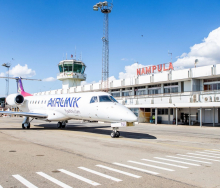The rise of embedded subscriber identity module (eSIM) technology is proving a game-changer for travellers abroad.
Traditional data roaming costs are high and there are several reasons for this.
When travellers use data abroad, their home network must pay the local network for using its infrastructure. The systems managing these transactions are also outdated and lack transparency, often resulting in unclear and obscure charges.
Managing different regulations and taxes across countries adds complexity and cost, as do the administrative overheads of maintaining these international agreements. There has also been very little competition, keeping prices high.
The high costs involved in traditional data roaming have led to the rise of eSIMs.
According to Mark Collie, CEO of South African-born global eSIM service provider KnowRoaming, travel eSIMs are an innovation in roaming, where providers can offer fixed, affordable rates for destinations, bypassing high roaming fees.
“These eSIMs are generally pre-paid, providing consumers with clear and transparent upfront costs before they travel, without any hidden fees or “bill shock” upon their return home,” he says.
There are good savings to be made. For example, for an eSIM data plan of 5GB for 15 days, travellers would pay R273. If they went the traditional roaming route, they would pay around R1 400 for only ten days’ worth of the same amount of data.
Travellers should be careful about their data usage, Collie advises.
“Navigational apps like Google Maps can use a lot of data, so it’s often a good idea to download maps for the area you’ll visit. Streaming apps like YouTube and Netflix (250-500 MB per hour) are also data-intensive.
“Checking data usage statistics on your phone can give you an idea of how much data certain apps consume and your average over time. Additionally, consider activities like video calls (1-2 GB per hour), social media uploads and automatic app updates (50-500MB per download), as these can also contribute significantly to data usage,” Collie says.














